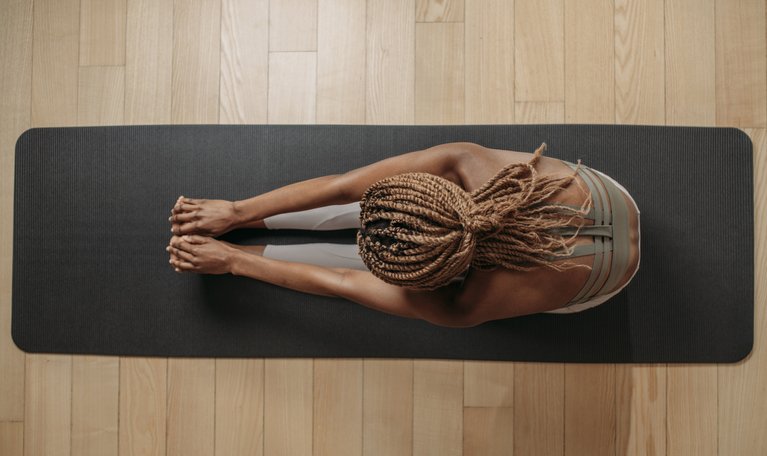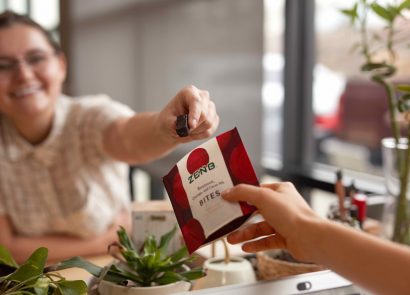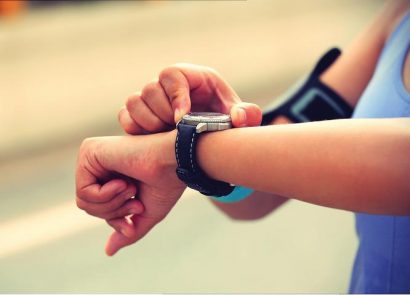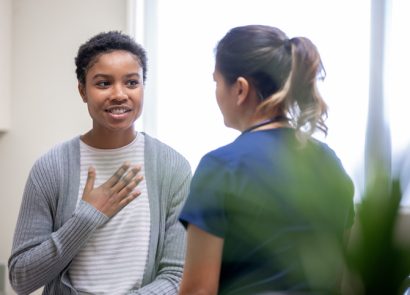Life is packed with excitement – and surprises. Even when you have the best intentions to do a quick YouTube HIIT session before starting the chores, or you keep meaning to go on a run after work, life can get in the way. Before you know it, it’s pyjama o’clock and you’re left feeling guilty about missing ‘yet another’ workout. If this sounds familiar, maybe it’s time to take a step back and listen to what the energy in your body is trying to tell you. “We all have unique energy build-ups in our body, created from different life experiences and circumstances,” says Kim Coley, owner and wellbeing practitioner at Soul Happy (soulhappy.org.uk). “So intuitive and patient movement helps us work on our own healing, rhythm and needs.” There are many gentler forms of exercise such as Pilates, yoga, and barre (that you can do alone or with a partner) to hone your muscles, shape your silhouette, improve your posture, and get your brain firing. So, now 2020 has forced us all to become a little more introverted and slow down, here’s how you can embrace it.
Slow and steady wins the race
Calmer, longer exercise sessions, such as walking or a slow swim, are classed as low-intensity steady state (LISS) activities, as opposed to high-intensity interval training (HIIT), such as 15-minutes of circuits or spinning with little to no pauses. HIIT sessions cause post-exercise oxygen consumption (EPOC), meaning your body continues to burn calories for hours after – which, if you’re looking to lose weight, can be a serious plus. However, when stress hormones are universally high, speedy sweat sessions could have negative implications. A study from Yale University found that women who are stressed tend to carry excess abdominal weight, and stress also upsets the gut-brain connection. So don’t beat yourself up for swapping your weekly Zumba session for a walk in the countryside instead, your body might just thank you for it.
Mind over muscle
Just by thinking about certain body parts, you send mental strength there to stimulate it. In research conducted in The Journal of Neurophysiology, volunteers’ wrists were immobilised for a month, but just by meditatively thinking about flexing the muscle they achieved two times more strength there compared to those who did nothing. Time to manifest some muscles.
Feel powerful with pilates
“The key to feeling truly strong is to tune your body from the inside out,” says Rebecca Still (rebeccastillfitness.com). “Pilates achieves this by putting you in a parasympathetic nervous state, or PNS.” PNS is known as your ‘rest and digest mode’, which is opposite to the frantic ‘fight or flight’ vibes currently in the air. “The focus within Pilates is strengthening and stretching,” says Rebecca. “You’re placing yourself in a calm state – but you feel the burn the next day because you’ve focused so much on empowering intricate muscles.” Try to include exercises that require mental focus as well as physical: “For example, when doing a simple gym crunch, concentrate on lengthening your spine and leaning from the crown of your head, so you’re creating maximum space in your body. You’ll learn to ‘switch on’ different parts of your torso bit by bit, including your pelvis, abdominals and different vertebrae.”
Yoga go your own way
Yoga teacher Kath Burrows (@pocket_ sized_yogi) says when people practise yoga at their own pace rather than scheduled classes, it becomes more intuitive. “When you’re by yourself, you really start listening to your body’s needs, which is less possible in a class where you’re focused on the teacher’s guidance,” she says. Plus, there are no classmates to compare yourself to, such is human nature! “I see yoga as a metaphor for life,” says Kath. “If you can better accept feelings – such as impatience and frustration – that arise in your practice, you’re better equipped to deal with real life’s curveballs.” There are many types of yoga, from new Buti (fast yoga to dance music), to breath-focused Nidra and gentle Yin. “I prefer slower Forrest yoga because you really breathe into it, become aware of where your mind and body are, and whether you can deepen and release more,” continues Kath. “What’s more, as a former gym bunny and runner, I know yoga complements faster cardio by lengthening tight muscles to increase range of motion and strength.” Mastering handstands has become increasingly popular of late, but as Kath explains, the work you do before you start attempting them can make all the difference: “I love handstand work as I’m often tight around my shoulders and pecs. Back bends helps me release that tightness. I listen to how energetic (or not) my body feels and make the back bends passive – by simply laying over a bolster for example – or more active, such as wheel pose, where your palms and feet are on the floor and your chest and pelvis lifts and lengthens upwards.”
Open the barre
According to Rebecca, barre, inspired by ballet, is like ‘Sudoku for the body’. “It’s modern-day legs, bums and tums,” she says. “But you’re focusing on tiny muscles in your spine, shoulders and legs, not larger muscle groups.” It may not look like you’re doing much, but you certainly feel it as you work external rotator muscles with lots of micro-movements and pulses. “This is so important because by starting with deeper, smaller muscles, you get longer-lasting results,” says Rebecca. “If you work just superior muscles, you risk injury if you suddenly move to whole-body cardio or weighted exercise.” Plus, there’s constant mind and body communication. “You’ll think things like ‘where is my neck alignment?’ and ‘how are my shoulders stacked?’,” says Rebecca. “You will sweat, without impacting your joints, and you’ll reawaken parts of your brain that have lain dormant recently.” In Plié for example: “In this classic ballet move, you use six deep lateral rotators from your hips as you lower into a graceful squat, heels on the ground. You’re also focusing on adductors and strengthening big leg muscles, which are the real calorie burners.”
Emerge stronger
As strange as 2020 has been, the positives are that you can work to your own schedule, and focus introspectively on your mindbody connection. “High-intensity exercise is brilliant for speed, cardio, and resilience,” says Kim, “However, it’s often prescriptive and doesn’t allow natural expression of self and energy.” So with collective mindsets in ‘each day as it comes’ mode, don’t have a strict regime. Have fun, enjoy going with your own flow and trust that you can still feel strong and fit with softer exercise. Kim leaves us with this thought: “Being present with past and current experiences – connecting with yourself on more levels – really proves that slow and purposeful has a very important place in fitness.”





















